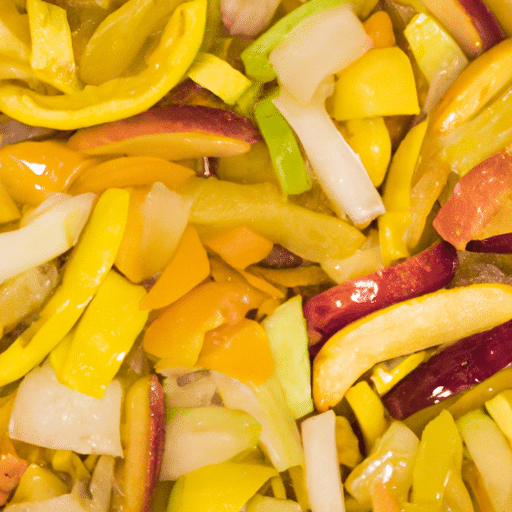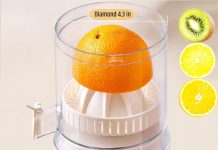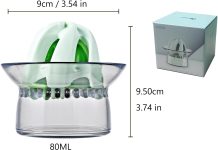Have you ever wondered what to do with all that leftover pulp after juicing your favorite fruits and vegetables? Well, you’re not alone! Many juicing enthusiasts find themselves faced with this puzzling predicament. But fear not, because we’ve got you covered. In this article, we’ll explore some creative and tasty ways to make the most of that nutritious pulp, ensuring nothing goes to waste. So, let’s discover how to transform your juicing pulp into delicious culinary creations that will leave you feeling satisfied and fulfilled.
Review contents
Recipes for Juicing Pulp
Fruit Pulp Muffins
One great way to utilize the leftover pulp from juicing is by incorporating it into delicious fruit pulp muffins. By adding the pulp to your muffin batter, you not only reduce food waste but also enhance the nutritional value and fiber content of your baked goods. Simply mix the pulp with your favorite muffin recipe and enjoy the natural sweetness and texture it adds. Feel free to experiment with different combinations of fruit pulp to create unique flavors and textures in your muffins.
Vegetable Pulp Soup
If you’re more into savory options, vegetable pulp soup is the way to go. After juicing your vegetables, save the remaining pulp and use it as the base for a flavorful and nutritious homemade soup. Sauté the pulp with aromatics like onions and garlic, then add vegetable broth and your favorite spices. Simmer until the flavors meld together, and you’ll have a hearty and satisfying soup that is packed with vitamins and minerals.
Pulp Crackers
Turn your juicing pulp into a crunchy and wholesome snack by making pulp crackers. Mix the pulp with flour, spices, and a binder like ground flaxseed or chia seeds. Roll out the mixture and cut it into cracker shapes before baking them until golden and crispy. These homemade crackers are not only a great way to use up your juicing pulp but also a healthier alternative to store-bought snacks. Enjoy them on their own or pair them with your favorite dips and spreads.
Pulp Smoothie
When it comes to juicing, it’s all about maximizing the nutrition and flavors of the fruits and vegetables. That’s why using the leftover pulp in a smoothie is such a fantastic idea. Instead of throwing it away, blend the pulp with your favorite fruits, yogurt, and a liquid of your choice to create a vibrant and nutrient-packed smoothie. This way, you’ll be getting the full benefits of the produce, including the fiber that is often lost in the juicing process.
Composting Juicing Pulp
What is Composting?
Composting is a natural process that decomposes organic materials into a nutrient-rich substance called compost. It involves creating the right conditions for microorganisms, such as bacteria and fungi, to break down organic waste into a dark, crumbly material that can be used to enrich soil. Composting is not only an excellent way to reduce waste but also a sustainable practice for improving soil fertility.
Benefits of Composting Juicing Pulp
Composting juicing pulp offers several benefits. Firstly, it diverts food waste from landfills, reducing greenhouse gas emissions. Secondly, juicing pulp is rich in nutrients and organic matter, making it an ideal ingredient for compost. As it breaks down, the pulp releases nutrients into the compost, which can later be used to nourish plants and enhance soil fertility. Additionally, composting juicing pulp helps to maintain moisture and improve soil structure, leading to healthier gardens and landscapes.
How to Compost Juicing Pulp
Composting juicing pulp is a straightforward process. Begin by collecting the pulp in a compost bin or pile. Layer it with other compostable materials such as vegetable scraps, coffee grounds, and yard waste. Maintain the proper moisture level by watering the pile occasionally, and turn it regularly to ensure proper aeration. Over time, the pulp will break down, and you’ll be left with nutrient-rich compost that can be used in your garden to promote healthy plant growth.
Feeding Pets with Juicing Pulp
Safety Considerations
When considering using juicing pulp in homemade pet food, it’s important to keep a few safety considerations in mind. First and foremost, consult with your veterinarian to ensure the specific pulp you’re using is safe for your pet’s consumption. Some fruits and vegetables, such as grapes or onions, can be toxic to certain animals. Additionally, avoid using pulp that contains seasonings or additives that may be harmful to your pet. Always prioritize your pet’s health and well-being when incorporating juicing pulp into their diet.
Using Pulp in Homemade Pet Food
If deemed safe by your veterinarian, juicing pulp can be a valuable addition to homemade pet food. Mix the pulp with lean proteins like cooked chicken or fish, and add in some whole grains like cooked rice or quinoa. This combination provides a nutrient-rich and balanced meal for your pet, while also utilizing the leftover pulp in an eco-friendly way. Homemade pet food allows you to control the ingredients and quality, ensuring your furry friend receives a wholesome diet.
Creating Pet Treats with Juicing Pulp
Another way to incorporate juicing pulp into your pet’s diet is by making homemade treats for them. Combine the pulp with pet-friendly ingredients like peanut butter, oats, and eggs to form a dough. Shape the dough into small treats, and bake until they are cooked through. These homemade treats are a fantastic way to reward your pet while taking advantage of the nutritional benefits of juicing pulp. Just be mindful of portion sizes and avoid overfeeding.
Using Pulp for Skincare
Exfoliating Scrubs
Pulp from fruits and vegetables can be transformed into natural, exfoliating scrubs that gently remove dead skin cells, leaving your skin feeling rejuvenated and smooth. Mix the pulp with a gentle exfoliant such as sugar or coffee grounds and add a moisturizing ingredient like honey or coconut oil. Gently massage the mixture onto your skin in circular motions, then rinse off with warm water. Your skin will thank you for the natural glow and revitalization.
Moisturizing Masks
Pulp can also be used to create moisturizing masks that hydrate and nourish the skin. Combine the pulp with ingredients like plain yogurt, avocado, or aloe vera gel to create a hydrating mask. Apply the mixture to your face and leave it on for 10-15 minutes before rinsing off with warm water. The pulp will deliver a dose of vitamins and antioxidants to your skin, promoting a healthy and radiant complexion.
DIY Body Wraps
For a luxurious spa-like experience at home, consider using juicing pulp in a DIY body wrap. Mix the pulp with ingredients like clay, essential oils, and warm water to create a paste. Apply the paste to your body, focusing on areas where you want to tighten or detoxify the skin. Wrap yourself in a warm towel or plastic wrap and let the mixture work its magic for about 30 minutes. Afterward, rinse off the mask and enjoy the smooth and supple feel of your skin.
Making Homemade Paper from Juicing Pulp
Pulp Papermaking Process
Making homemade paper from juicing pulp is a fun and creative way to upcycle the leftover pulp. Start by blending the pulp with water to create a smooth and even consistency. Place a mesh screen or a piece of fabric in a frame, and pour the pulp mixture onto it, spreading it evenly. Use a sponge or your hands to press out the excess water. Once the pulp has dried, carefully remove it from the screen, and voila! You have your very own homemade paper ready to be used for various crafts.
Decorative Paper Ideas
The possibilities are endless when it comes to using homemade paper for decorative purposes. Cut the paper into different shapes and sizes to create unique greeting cards or gift tags. Incorporate dried flowers or leaves into the paper for a charming and natural look. You can also experiment with adding color to the pulp mixture by using natural dyes or pigments. Homemade paper adds a personal touch to any project and allows you to showcase your creativity.
Benefits of Using Juicing Pulp for Papermaking
By using juicing pulp for papermaking, you’re not only reducing waste but also creating a sustainable alternative to traditional paper. Unlike commercial paper production, which often involves deforestation and chemical processing, homemade paper requires minimal resources and is environmentally friendly. Additionally, the natural fibers present in juicing pulp give the paper a unique texture and appearance, adding character to your crafts.
Enhancing Your Garden with Juicing Pulp
Creating Nutrient-Rich Soil
Juicing pulp can enrich your garden by adding valuable nutrients to the soil. Mix the pulp directly into the soil or create a compost pile specifically for juicing pulp. As the pulp decomposes, it releases nutrients, such as nitrogen, phosphorus, and potassium, which are essential for healthy plant growth. This natural fertilizer helps improve soil fertility and provides a sustainable way to nourish your garden.
Mulching with Pulp
Mulching is a gardening technique that involves covering the soil around plants with a layer of organic material. Using juicing pulp as mulch not only helps retain moisture in the soil but also suppresses weeds and regulates soil temperature. Spread a layer of juicing pulp around your plants, ensuring it’s not too thick to prevent soil from drying out. As the pulp breaks down, it will add organic matter to the soil, improving its structure and fertility.
Using Pulp in Vermicomposting
Vermicomposting is a type of composting that utilizes worms to break down organic waste. By adding juicing pulp to your vermicompost bin, you provide the worms with a nutritious food source. The worms will work their magic, consuming the pulp and transforming it into nutrient-rich vermicompost, also known as worm castings. This dark and crumbly compost is a valuable addition to your garden, supplying essential nutrients and beneficial microbes to your plants.
Making Dried Fruit Leather with Juicing Pulp
Drying the Pulp
Transform your leftover fruit pulp into a delightful and nutritious snack by making dried fruit leather. Spread the pulp onto a baking sheet lined with parchment paper or a silicone mat, then smooth it out evenly. Place the baking sheet in a dehydrator or oven set to a low temperature (around 140°F or 60°C) and let it dry for several hours until the fruit pulp becomes pliable and no longer sticky to the touch.
Flavoring Ideas
The beauty of making dried fruit leather is that you can experiment with different flavor combinations using your juicing pulp. Add spices like cinnamon or nutmeg, or enhance the sweetness with a touch of honey or maple syrup. You can also mix various fruits together to create unique and delicious flavor profiles. Let your creativity shine as you transform plain pulp into a tasty and portable snack.
Storing and Enjoying Fruit Leather
Once the fruit leather has dried to the desired consistency, carefully peel it off the parchment paper or silicone mat. Roll it up and store it in an airtight container or wrap it with plastic wrap to keep it fresh. Fruit leather is a fantastic on-the-go snack that provides a boost of energy and is packed with natural fruit flavors. Enjoy it as it is or cut it into bite-sized pieces for a quick and healthy snack.
Using Pulp in Baking
Adding Pulp to Bread
Introduce extra flavor and nutrition to your homemade bread by incorporating juicing pulp into the dough. Whether it’s fruit pulp for a subtly sweet loaf or vegetable pulp for a savory touch, the options are endless. Mix the pulp into your bread dough along with the other ingredients, and proceed with the baking process as usual. The resulting bread will be moist, flavorful, and have a delightful texture.
Incorporating Pulp in Cakes and Cookies
Take your baking endeavors to the next level by using juicing pulp in cakes and cookies. Fruit pulp can add moisture and natural sweetness to cakes, while vegetable pulp can provide a unique twist in savory cookies. Experiment with different recipes, and don’t be afraid to get creative. You’ll be amazed by how well juicing pulp can enhance the flavors and textures of your baked goods.
Using Pulp in Pancakes or Waffles
Give your breakfast a nutritious boost by incorporating juicing pulp into pancakes or waffles. The pulp adds moisture, flavor, and nutrients to your morning treats, making them more wholesome and satisfying. Mix the pulp with the pancake or waffle batter, and cook them as usual. Serve with your favorite toppings, and enjoy a breakfast that not only tastes delicious but also helps reduce food waste.
Feeding Livestock with Juicing Pulp
Safety Considerations
When considering feeding juicing pulp to livestock, it’s crucial to prioritize their health and safety. Different animals have varying dietary requirements, so consult with a veterinarian or animal nutritionist before introducing pulp into their diet. Some animals may have allergies or sensitivities to certain fruits or vegetables present in the pulp. Additionally, ensure that the pulp does not contain any harmful additives or seasonings that may be toxic to animals.
Using Pulp as Animal Feed
If deemed safe by a professional, juicing pulp can be a valuable addition to livestock feed. It can serve as a source of fiber, vitamins, and minerals that contribute to a balanced diet. Consider mixing the pulp with other feed components such as grains or pellets to provide a complete and nutritious meal for your animals. Monitoring their health and well-being is essential when introducing any new food into their diets.
Consulting a Vet or Nutritionist
To ensure the best possible health outcomes for your livestock, consult with a veterinarian or animal nutritionist before incorporating juicing pulp into their diet. They can assess the specific needs of your animals and provide guidance on the appropriate quantities and types of pulp to feed them. These professionals can help you tailor a diet that meets the nutritional requirements of your livestock and promotes overall well-being.
Creative Ways to Use Juicing Pulp
Pulp Ice Cubes for Beverages
Add a burst of flavor and visual appeal to your beverages by freezing juicing pulp into ice cubes. Simply fill an ice cube tray with pulp and water, then freeze until solid. These colorful and nutrient-rich ice cubes can be added to water, sparkling drinks, or cocktails, making them a refreshing and vibrant addition to any beverage.
Pulp in Salad Dressings or Sauces
Incorporate juicing pulp into homemade salad dressings or sauces to enhance their flavor and nutritional value. Blend the pulp with ingredients like olive oil, vinegar, herbs, and spices to create a unique and vibrant dressing. The pulp adds texture and complexity, transforming a simple dressing into a delicious and nutritious accompaniment to your fresh salads.
Pulp in Smoothie Bowls
When preparing a smoothie bowl, don’t forget to include juicing pulp for added texture and nutrients. Blend the pulp with frozen fruits, liquid of your choice, and a thickening agent like yogurt or bananas. Pour the mixture into a bowl and top it with your favorite toppings like granola, sliced fruits, or nuts. The pulp adds a satisfying chewiness and boosts the nutritional value of your bowl, ensuring a wholesome and indulgent breakfast or snack.
With these various uses for juicing pulp, you can turn what may have been discarded as waste into valuable resources. From culinary creations to environmental benefits, the possibilities are endless. Let’s embrace the versatility of juicing pulp and explore the different ways we can reduce waste, promote sustainability, and enjoy the benefits of nature’s bounty.

































